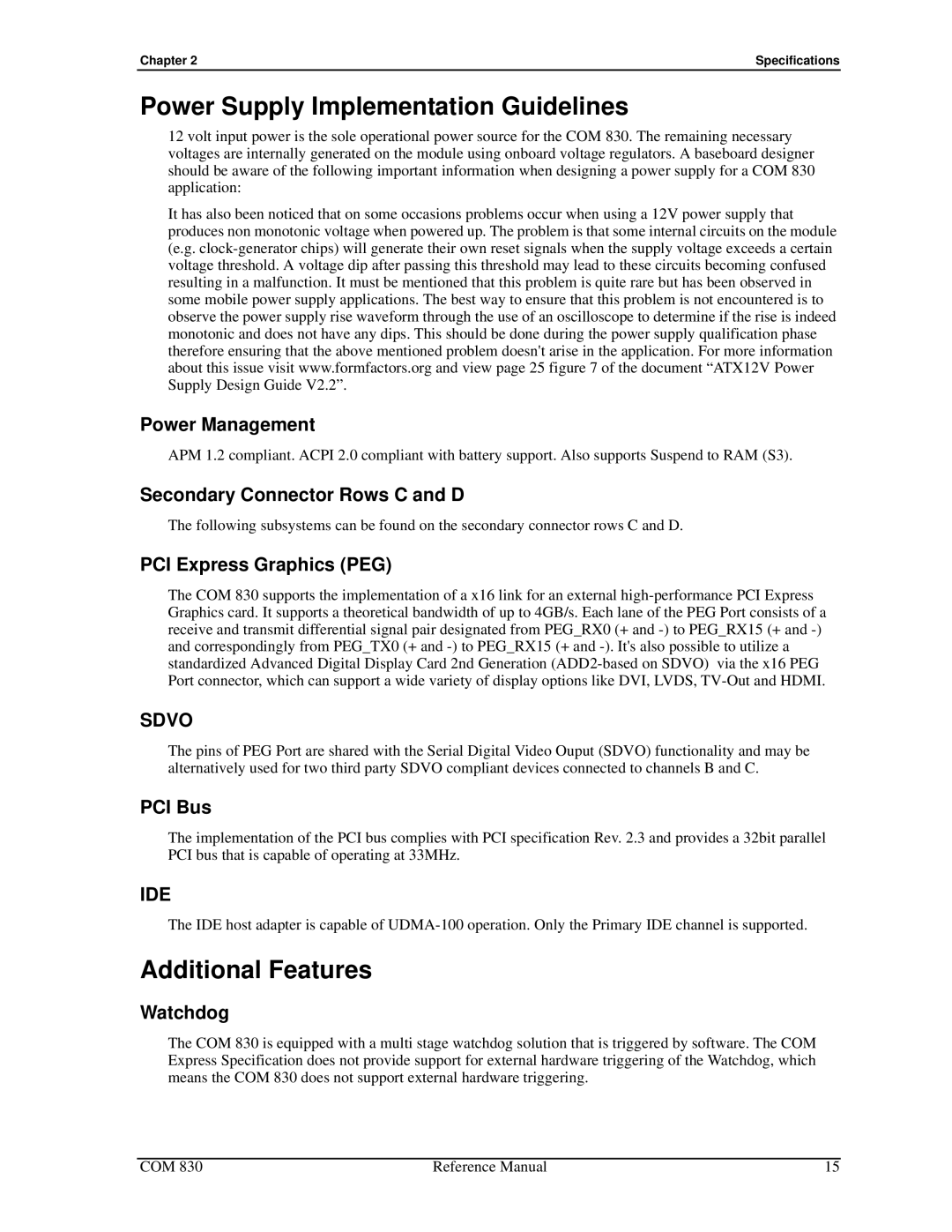Chapter 2 | Specifications |
Power Supply Implementation Guidelines
12 volt input power is the sole operational power source for the COM 830. The remaining necessary voltages are internally generated on the module using onboard voltage regulators. A baseboard designer should be aware of the following important information when designing a power supply for a COM 830 application:
It has also been noticed that on some occasions problems occur when using a 12V power supply that produces non monotonic voltage when powered up. The problem is that some internal circuits on the module (e.g.
Power Management
APM 1.2 compliant. ACPI 2.0 compliant with battery support. Also supports Suspend to RAM (S3).
Secondary Connector Rows C and D
The following subsystems can be found on the secondary connector rows C and D.
PCI Express Graphics (PEG)
The COM 830 supports the implementation of a x16 link for an external
SDVO
The pins of PEG Port are shared with the Serial Digital Video Ouput (SDVO) functionality and may be alternatively used for two third party SDVO compliant devices connected to channels B and C.
PCI Bus
The implementation of the PCI bus complies with PCI specification Rev. 2.3 and provides a 32bit parallel PCI bus that is capable of operating at 33MHz.
IDE
The IDE host adapter is capable of
Additional Features
Watchdog
The COM 830 is equipped with a multi stage watchdog solution that is triggered by software. The COM Express Specification does not provide support for external hardware triggering of the Watchdog, which means the COM 830 does not support external hardware triggering.
COM 830 | Reference Manual | 15 |
